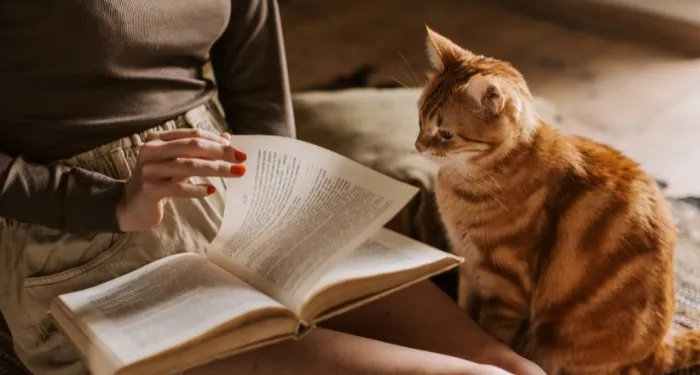Orchids grow in tropical forests and on icy mountains, in lowland bogs and wildflower meadows. They are found on every continent apart from Antarctica. Some grow on the ground, others climb high; some self-pollinate, others depend on insects. There are currently around 30,000 named species, and although many are threatened with extinction, botanists find new ones every year. Two new books, The Lost Orchid by Sarah Bilston and Saving Orchids by Philip Seaton and Lawrence W. Zettler, consider human engagement with these strange and beautiful plants.
Seaton and Zettler include stories about species across the globe, while Bilston focuses on a single flower that took Europe and America by storm. The star of her spirited account of nineteenth-century orchidomania is a radiant beauty with huge red-and-purple flowers. Like an actress or a dancer, it also owed its exotic appeal, wrote the young botanist John Lindley in the early 1820s, to the “graceful manner in which its broad flag-like petals wave and intermingle when they are stirred by the air, or hang half dropping half erect when at rest and motionless.” When Lindley included it in the lavish catalog he compiled of the merchant William Cattley’s orchid collection, he named it Cattleya for his patron and labiata for the flower’s red lip, implicitly linking the orchid “with women, sexuality, desire.”
Although Bilston frames The Lost Orchid with dramatic descriptions of the cattleya’s discovery and the violent, chaotic hunt to find it again seventy years later, this is no straightforward plant-hunting saga. Her previous books include a study of women and fiction in the late nineteenth century and an analysis of Victorian suburbia, and here too she is concerned with social as much as botanical history. The Lost Orchid takes up a series of narratives, from the growth of scientific networks and horticultural markets to shifts in fashion and taste, drawing on letters and cables, bills of lading and nurserymen’s advertisements, botanical illustrations and printed works, newspaper stories and novels. The archives and sources speak to one another: the heightened emotional response to orchids is linked to ideas of sensibility, and their “alluring strangeness” to Orientalism and the taste for the Gothic; the preoccupation with taxonomy is compared to the obsession with naming and identity in Victorian novels, the “derring-do” of plant hunters’ tales to national identity and imperialism. One recurring theme is the gap between letters from collectors struggling in distant lands—brusque, desperate, and sometimes almost illiterate—and the published accounts, polished and reframed by their sponsors and employers and designed to woo ever-growing markets.
William Swainson, a stubborn, difficult character burdened by a speech impediment and a lack of formal education, discovered Cattleya labiata in Brazil in 1818. He had managed, despite interruption by a violent but short-lived revolution, to journey across a vast area along the coast and through the mountains between Recife and Rio de Janeiro. His haul, carefully packed and sent back to Britain, included 760 bird specimens, more than 20,000 insects, “drawings and descriptions of 120 species of fish,” and a host of plants, among them an “interesting collection of parasitic plants.” These included the roots of the Cattleya labiata, an orchid that is not a parasite but an epiphyte whose fibrous roots snake across the bark of trees and, as Seaton and Zettler explain, draw on the “rivulets of a dilute nutrient soup” flowing down from the mosses and lichens above.
Swainson sent his parcel of roots to his friend William Jackson Hooker. Far keener on botany than on the family brewing business, Hooker had been elected to the Linnean Society at twenty-one and by 1817 was deeply in debt after a disastrous expedition to Iceland that Joseph Banks, the president of the Royal Society, had persuaded him to undertake. Yet he could not resist trying to cultivate the Brazilian orchids. This was a bold step, since it was only in 1812 that an extraordinary “air plant”—an orchid from Montevideo—had arrived in Britain, causing much amazement. But within a year or two, in Hooker’s homebuilt greenhouse, or “stove,” the new purple-and-red orchid flowered. When Hooker became a professor of botany at Glasgow, he raised one offset—a small baby plant growing on the mother plant—in the city’s botanical garden and gave another to Cattley’s collection, where Lindley named it. But while Hooker and Lindley both achieved fame, Hooker as the director of the Royal Botanic Gardens at Kew and Lindley as a renowned taxonomist, Swainson disappeared from this story; bitter at his lack of advancement, he immigrated to New Zealand in 1840.
After Lindley included Cattleya labiata, with a ravishing illustration, in his sumptuous Collectanea Botanica (1821–1826), it was displayed at horticultural gatherings, described in scholarly texts and gardening magazines, and proudly “identified with a British collector, named by a British botanist, and situated in British and European knowledge systems.” Laden with the sensual allure of the exotic, it could still be piously exalted as demonstrating the supreme hand of God in creation. It was also wildly expensive. In the mid-1830s the Floricultural Cabinet included it among plants that cost five to ten guineas each, the equivalent of between $550 and $1,200 today.
To add to its appeal, its origin was elusive. Swainson had never said exactly where he found it, and from then on it was the “lost” orchid. New hunters set out, including George Gardner, one of Hooker’s Glasgow protégés, who headed for Brazil in 1836, funded by the Duke of Bedford. His published account, Travels in the Interior of Brazil (1846), illustrates how plant hunters presented themselves as both serious field naturalists and intrepid adventurers while discounting earlier explorers and ignoring the assistance and knowledge of indigenous people (an omission emphasized in several recent studies, as Bilston points out in her excellent and detailed notes). Yet far from being solitary, Gardner and his peers were supported by a network “of ships, information, financial systems, letters of introduction to English-speaking patrons, bankers, and merchants,” and they were encouraged to look out for commodities and natural resources that invited exploitation.
The dangers they faced, however, were real. The orchids that Gardner sent home were gathered on a perilous precipice deep in mist, slick with rain, and tossed by wind in the mountains north of Rio de Janeiro. As it turned out, to the despair of later hunters misled by his account, these were not, as he thought, Cattleya labiata but Cattleya lobata—Swainson had made his discovery not in these mountains but more than a thousand miles farther north, in Pernambuco. When Gardner revisited the area the following year he found that the forest had been cut for charcoal: with the rapid spread of cultivation, he wrote, “many of the species which still exist, will in the course of a few years, be completely annihilated.” This, it was assumed, was the fate of the Cattleya labiata.
Gardner’s Travels was timely, Bilston writes, for the orchid “was about to become an international superstar, its megawatt reputation spurred on by the middle-class consumers’ hunger for exotics.” Soon orchids were being shipped by the thousands, even millions, from many parts of the world. And as plants arrived that looked similar but not quite identical to the Cattleya labiata, confusion arose about their relationship—a headache for taxonomists but of little concern to avid new collectors. Orchidomania, as the craze was named, was different from seventeenth-century Tulip Mania, insisted the Staffordshire industrialist and collector James Bateman, the author of The Orchidaceae of Mexico and Guatemala (1843). Tulips, he pronounced sniffily, were a lower-class interest, while orchids would always remain the province of the aristocracy and elite, since they were so difficult to raise. Soon he was proved wrong. In 1849–1851 the six-penny Gardeners’ Chronicle, edited by Lindley and Joseph Paxton, ran a series of articles under the heading “Orchids for the Million.” In his The Orchid-Grower’s Manual (1852) the nurseryman Benjamin Samuel Williams argued that expensive hothouses were no longer essential—everyone could have a go at cultivation.
The cattleya remained too pricey for suburban gardeners. But the collecting of orchids, with competitions and shows policed by strict regulations, was taken up by the aspiring middle classes, including women, at whom many gardening magazines were directed. The celebrity gardener Louisa Lawrence won prizes at shows of the Horticultural Society, beating fierce male competition, and designed her orchid house as a grotto with rocks and fountains in which she displayed 227 species and varieties of orchids in a “naturalistic” setting.
Fortunes were made by nurserymen and growers, including the Exeter grower James Veitch, who sent out his own plant hunter, William Lobb (famous for introducing the monkey puzzle tree and giant Wellingtonia). But it soon dawned on Veitch that rather than scouring the world for rarities at great expense, he might do better to try breeding his own. Bilston explains:
As more and more varieties were “discovered,” as orchids of every color, size, hue, and fragrance piled up in nurseries and auction rooms, he was intrigued by the fact that no European, as yet, had worked out how to hybridize orchids—to create new varieties “to order,” so to speak.
Orchids now became part of yet another strand of Victorian life: the advancement of science and the crisis of faith. Hybridization was still controversial, since it seemed to contradict the belief that God designed the species once and for all at the Creation. In this dilemma Veitch and others turned to a two-part article of 1847 by William Herbert, dean of Manchester, who pointed to crossbreeding in the wild and to the disappearance of species, arguing that this complexity demonstrated the supreme brilliance of divine design.
But orchids are extremely hard to propagate, as many articles in the Gardeners’ Chronicle lamented. The breakthrough came after Veitch’s son James Jr. opened a new nursery in Chelsea in 1853 and employed the talented horticulturalist John Dominy. Three years later James Jr. showed Lindley a flower that Dominy had developed that was clearly a cross between the Himalayan Calanthe masuca and Calanthe furcata from the Philippines—it was named, in honor of its creator, Calanthe x dominii. “Amazed,” Bilston writes, “Lindley is said to have exclaimed: ‘You will drive the botanists mad.’”
One natural scientist who was delighted rather than maddened was Charles Darwin. “Orchids have interested me more than almost anything in my life,” he told Lindley. Bilston gives a sympathetic and well-paced account of Darwin’s “crisis” in the sweltering June of 1858, when Alfred Russel Wallace’s letter containing his thoughts on evolution arrived, propelling Darwin into the early announcement of his own views on natural selection in the joint presentation of their ideas at the Linnean Society. Accepting that his subsequent “Abstract”—published as On the Origin of Species in 1859—lacked precise evidence of how species could change through generations, he decided to explore orchids as an example.
Darwin was fascinated by the complex and varied mechanics of orchid reproduction. Most orchids have both male and female parts and could thus surely self-fertilize, so how would this fit his proposition that natural selection among differences created by outbreeding was essential for successful plants and animals? Looking at local British orchids, he found that they lured insects in at an angle so that they brushed the male part of the flower and were coated with pollen; by the time they reached another plant, the gluey pollen had hardened, making them enter at a different angle so that they could reach only the female part. This was extraordinary enough, but then Darwin turned to exotic orchids, whose structure is different and who hide their nectar deep within the flower. This would make the nectar apparently inaccessible. But when he inserted a dead bee into a magnificent cattleya from Veitch’s nursery, he found that the internal formation of these flowers, too, was angled so that they could be pollinated by insects, making crossbreeding possible. This applied even to extreme examples. Examining Madagascar’s Angraecum sesquipedale (now known as Darwin’s orchid), which has nectar spurs as long as fifteen inches, he suggested that the pollinator must be a moth with an equally long proboscis. Unlikely as that seemed, it turned out to be true: some years after his death it was discovered that the orchid was pollinated by a hawk moth with an incredibly long one.
Darwin’s On the Various Contrivances by Which British and Foreign Orchids Are Fertilised by Insects (1862) explicitly rejected the idea of the divine creation of static species, rattling religious orthodoxy still further. That year Veitch was developing more hybrids, including a beautiful Cattleya x dominiana, on sale in 1862 for one and a half guineas. Spurred by the excitement, British nurserymen started new firms: William Bull in Chelsea, Benjamin Williams in Holloway, the German-born Henry Frederick Conrad Sander in St. Albans. Orchid companies sprang up in North America, and the plant hunter Jean Jules Linden and his son Lucien founded a European “horticultural empire” based in Paris, Brussels, and Ghent.
All these flourished for years. In 1882 Williams was still putting on grand orchid exhibitions in London. His advertisements included carriage routes from the West End to his nurseries and directions for arriving by tram and train. In 1887, for Queen Victoria’s Golden Jubilee, Sander created a huge structure “bursting with orchids culled from Britain’s many dominions.” In the United States journals and advertisements declared that not only were orchids glamorous and decorative—and democratic—they were also good investments, “their money value increasing every day.” (They also kept their sensual power. Though beyond the time span of Bilston’s book, Proust was notably obsessed by orchids: for Swann and Odette in Swann’s Way (1913), faire catleya—“make cattleya”—becomes a private shorthand for making love.)
The gorgeous hybrids filling drawing rooms and conservatories were hailed as a triumph of modern science. But ironically their very newness prompted a longing for the old, the original orchids from the wild. Plant hunting intensified. By 1890, Bilston notes, it had reached fever pitch. In the concluding chapters of The Lost Orchid, making fine use of the exhaustive Sander archives at Kew, she chronicles the race to find Cattleya labiata again. The greatest struggle, full of intricate twists and turns, was that of Claes Ericsson, the chief plant hunter for Sander and Co. He was determined to find the elusive Erich Bungeroth of Linden’s L’Horticulture Internationale, who had sent back specimens of Cattleya warocqueana that looked remarkably similar to labiata.
When Sander announced in 1891 that the true “Queen of Cattleyas,” Cattleya labiata vera, had been found again in “Swainson’s original hunting ground,” Linden fought back, accusing him of misrepresentation. The argument ran for months in newspapers on both sides of the Channel, gripping the public. Sander presented the rediscovery as a patriotic achievement, transforming the letters from his beleaguered plant hunters into accounts of heroic British derring-do. Tales of “brave white men hacking their way through jungle undergrowth, dueling with ‘hasty-tempered’ alligators and ready-to-strike snakes” hit the bookstalls and soon invited irresistible parodies. As Seaton and Zettler point out, in the late nineteenth and early twentieth centuries wealthy collectors were still building huge collections. The British politician Joseph Chamberlain had fresh orchid corsages sent to him “to wear in his buttonhole each time he attended Parliament,” and rich amateurs such as Lionel Rothschild had their own botanical laboratories drenched in toxic chemicals. But inevitably orchidomania waned, eventually becoming a music hall joke.
And was there ever a single “true” lost orchid? Cattleya is a large, diverse genus; variations among species were inevitable, and domestication created still more. Somehow, though, this did not matter: the idea of the lost orchid conjured up a dream, a fantasy, not of a nurseryman’s commodity but of a plant somehow pure, outside the striving material world.
In the quest for orchids, Bilston notes, “forests were stripped, trees cleared, microclimates altered, ecosystems disrupted.” Sander sent his hunters out with explicit orders “to strip the area of every last C. labiata vera they could find.”
Saving Orchids also charts the Victorian obsession, vividly describing the first nurseries and listing some of the countless plant hunters, “many [of whom] are commemorated in the names of orchid genera and species.” The plants we see in shops and nurseries today, mostly moth orchids—Phalaenopsis hybrids—are grown commercially, creating “a multi-million dollar industry in the Netherlands and Taiwan.” But as Seaton and Zettler show, orchids are still victims of plunder in the wild, even in places where vulnerable plants are protected or grown for reintroduction. In early 2023 nine hundred newly transplanted orchids of two critically endangered species were stolen from Kings Park and Botanic Garden in Perth. As the tropical forests are felled, about half of the world’s orchid species “are threatened by the ‘fearsome five’: habitat destruction or land conversion; invasive species; loss of pollinators; poaching; and climate change.” Heartbreaking tales pile up as people remember scenes they once knew, such as children selling orchids for a few cents on the roadside near Rio de Janeiro. By 1992 only a few orchid-bearing trees remained there, one of which still had a huge clump of Cattleya harrisoniae: “Over four hundred flowers on the topmost branches of a large dying tree. A glorious mass of light purple and pink; a classic colony…. The last of their kind. DOOMED!”
This ought to be dispiriting, and so it is. Yet the clear-eyed, unsentimental account in Saving Orchids is also heartening and inspiring, determinedly optimistic. Compact, succinct, and wide-ranging, it is packed with stories and illustrated by superb, haunting photographs. The authors have many years of experience in this field, Seaton as the manager of the orchid seed bank network for the Royal Botanic Gardens at Kew and Zettler as a biology professor and research associate of the Chicago Botanic Garden. Entirely at ease with their subject, they share their knowledge lightly, brilliantly explaining botanical complexities in language any layperson can understand and incorporating personal stories, short “viewpoint” articles from experts, and fascinating asides on topics from hummingbirds to coffee growing.
Every page is fascinating, beginning with the descriptions of countless varieties of orchids and their habitats, from the epiphytes to the species that feed on fungi on the floors of tropical jungles, “an underworld filled with decomposition, darkness and decay.” We are told about growth cycles and reproduction, extinction and the discovery of new species, and the difficulties of taxonomy and identification, including the application of molecular genetics. Though technical, these sections are never dry. “Being a taxonomist is like being a detective,” one expert says.
Orchids, Seaton and Zettler note, have long had a place in human culture. They have been used in traditional medicine in China, Latin America, India, Africa, and Europe, and they still are—another driver of illegal collection. They have been valued for their perfume and flavor ever since the Aztecs first added vanilla beans to their cocoa. Their tubers have been ground up to make aphrodisiacs and flour for African polony, a local cake that became a delicacy in luxury hotels in Zambia, leaving local orchid populations so ravaged that they have to be imported from nearby countries, with women and girls “walking increasingly long distances over many days to obtain them.”
What makes this book so stirring is the depiction of the continuous, shifting relationship between plants and people, not only the nurserymen and plant hunters of the past but the individuals and communities working today on protection and conservation. Some efforts are on a small local scale; others are of huge international reach, like the vast seed bank at Kew. As we get to know the people tending them, the plants’ Latin names cease to sound daunting. In the photographs, the bearded Clyde Butcher stands waist-deep in water photographing the Everglades, while Rebecca Hsu and her husband, Brian, beam from their ropes and harnesses on the world’s tallest camphor tree in Taiwan. The smiling Catalina Restrepo holds a flask of seedlings in Colombia; Chilean schoolchildren lay out their homemade herbarium on a table; Brazilian students laugh from behind a phalanx of bronze Cattleya brevicaulis.
Orchids are one of nature’s “canaries in the coalmine,” write Seaton and Zettler. “Particularly sensitive to subtle environmental changes, they provide us with an early warning system against potentially catastrophic environmental degradation.” But we should treasure them for themselves, in all their bizarre and varied beauty. Victorian growers, Bilston says drily, did not foresee the transformation “from precious exotic to ubiquitous office gift, a couple of steps up from scented candles and boxed soap.” The next time you see an orchid wrapped in cellophane, don’t take it for granted; give it a nod of recognition. And thanks.



















 English (US) ·
English (US) ·